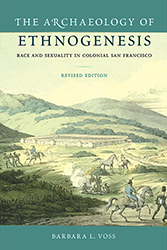Collections
The Stanford Archaeology Center cares for a large collection of archaeological and ethnographic artifacts collected by the University since its founding in 1891. The Stanford University Archaeology Collections are a museum-style collection that includes artifacts from around the world and the Bay Area, including campus lands. The collections are particularly strong in archaeological ceramics from the Americas, neolithic tools from around the world, and ethnographic materials from South America, California, and the Northwest Coast.
Many of the artifacts in the collection were once held in the University Museum (now the Cantor Center for Visual Arts), which was founded in conjunction with the University to house the collections of historical, artistic, and cultural material collected by the Stanford family. Following her son Leland Junior’s death in 1884, Jane L. Stanford travelled extensively, adding to the collections as she went. Among many other items she acquired large numbers of stone tools including collections from Paleolithic and Neolithic Egypt, Neolithic Denmark, India, and the Mississippian Midwest. She also bought Egyptian antiquities and collections of ethnographic material from the Pacific Islands and Americas. Following these foundations, the Museum expanded its collections throughout the twentieth century and grew extensively through donations by private collectors and alumni.
In the 1990s, much of the archaeology and ethnography collections of the University were transferred out of the Cantor to the care of the Anthropology Department where they could be used more directly in teaching and research. Today, these collections are curated by the Stanford University Archaeology Collections and form an active part of the Archaeology Center’s teaching, research, and outreach missions. Artifacts are used in lectures and lab sessions, independent student research projects, faculty research, professional training, and exhibitions. Materials from the collection are also used in outreach projects to local schools and community groups. Stanford also fully complies with the mandates of the Native American Graves Protection and Repatriation Act.
The Stanford University Archaeology Collections' mission is to support the Stanford Archaeology Center by promoting understanding and appreciation of world cultures, past and present, through the collection, preservation, research, and interpretation of the global record of material culture in an ethical and lawful manner. We promote collections-based scholarship as a core disciplinary competency and mode of intellectual inquiry and model best practices in the ethical stewardship of cultural heritage collections on campus and beyond. We believe in "connections through collections,” celebrating the power of material culture to inspire innovative thinking and bring people together.
For more information about the archaeological, ethnographic, and archival collections at the Stanford Archaeology Center, please contact our Academic Curator and Collections Manager, Christina J. Hodge. We regret that we are only able to answer enquiries regarding material in or relating to Stanford's collections and are unable to perform general object identifications or valuations.




